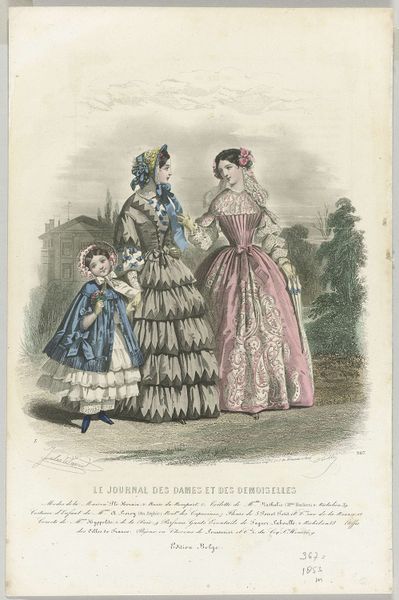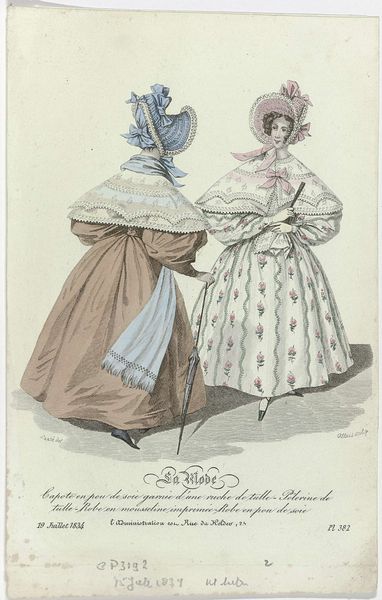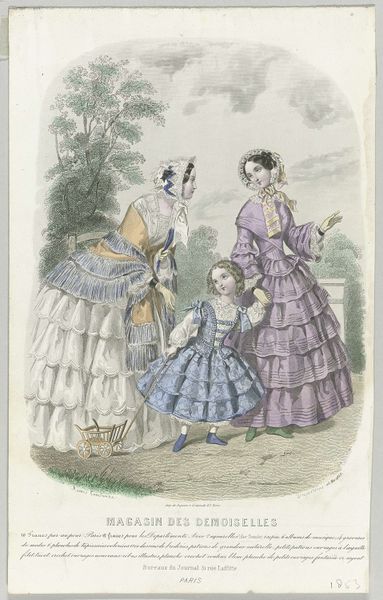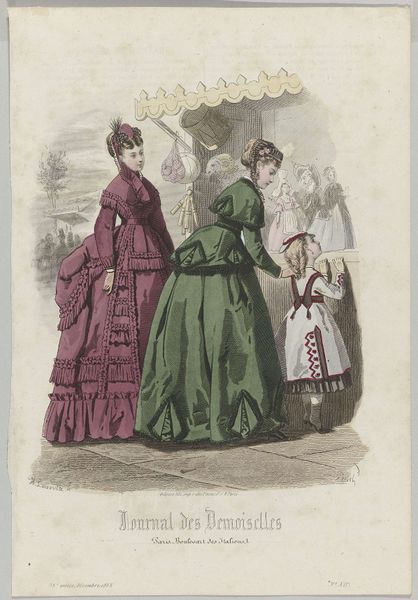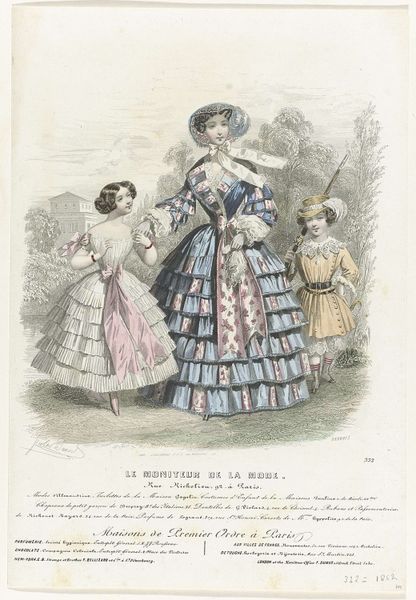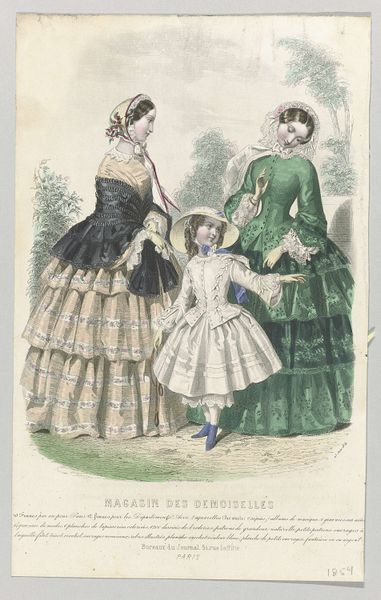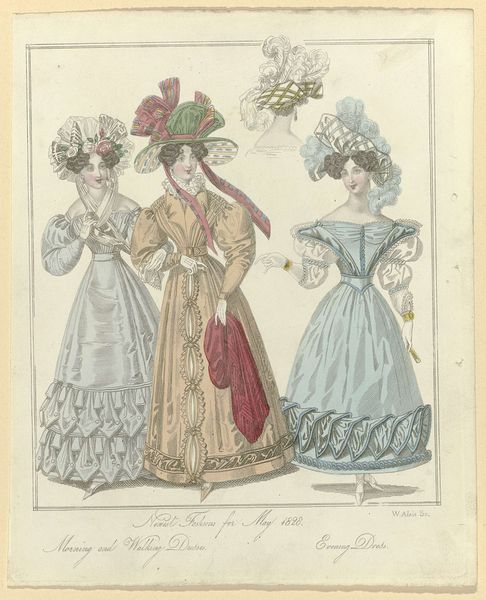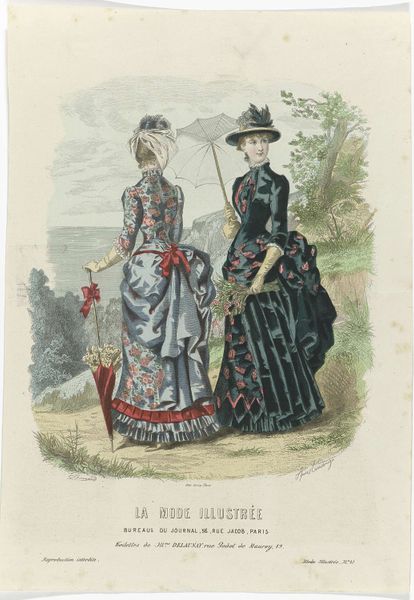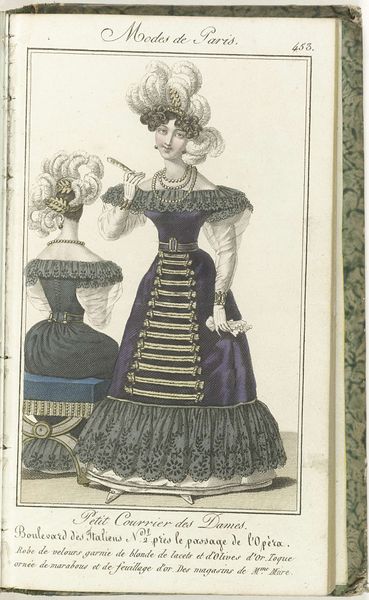
Le Journal des Dames et des Demoiselles, edition Belge, ca. 1853, No. 341: Modes Françaises. c. 1853
0:00
0:00
Dimensions: height 259 mm, width 164 mm
Copyright: Rijks Museum: Open Domain
Curator: This is an interesting print from around 1853 titled, “Le Journal des Dames et des Demoiselles, edition Belge, No. 341: Modes Françaises.” It appears to be a coloured pencil drawing reproduced as a print. What are your initial thoughts? Editor: I’m immediately drawn to the mother's dress; it looks so impractical for a day at the beach! All those layers of fabric. It certainly speaks to a specific level of society. Curator: Absolutely. These fashion plates were immensely popular, catering to a growing consumer culture and solidifying Paris's role as a fashion capital, even influencing Belgian editions of magazines. Editor: It's fascinating to think about the production of these prints. Each one was meticulously crafted, involving not only the original artist but also the printmakers and colourists. Consider the labour involved! These images were carefully designed to promote consumerism. Curator: Yes, consider the institutions they served. Fashion journals like these dictated tastes and disseminated these standards across Europe. What kind of lifestyle and social practices were being advertised? Who were the imagined readers? Editor: And the coloured pencils! They would have been painstakingly applied to capture every detail of the gowns. I find myself wondering, what were these drawings made with? Were those artisanal materials used by only select suppliers to an elite market? The very act of acquiring and employing colored pencils speaks volumes about their access to resources. Curator: Indeed. And it speaks to how perceptions of women and childhood were also carefully cultivated, these weren’t just random illustrations, they were selling ideals about family life as well as fashion, constructing and communicating power structures within society. The setting, the beach, while ostensibly carefree, further enhances that curated image. Editor: Thinking about it more, I also see a commentary on materiality. The image is two-dimensional, mass produced with affordable tools, yet representing luxurious fabrics meant for only some people’s consumption. It highlights the contrast between image and reality. Curator: Precisely! It brings forth questions about who gets to participate in the lifestyle suggested here and in what form; whether it be consumption through the print or a more active practice of emulating the ideals presented here. Thank you for taking the time to dissect that with me, your considerations made for a wonderful expansion of the cultural narrative behind it! Editor: Thanks, same here. Considering the role of materiality has given me much to think about.
Comments
No comments
Be the first to comment and join the conversation on the ultimate creative platform.
